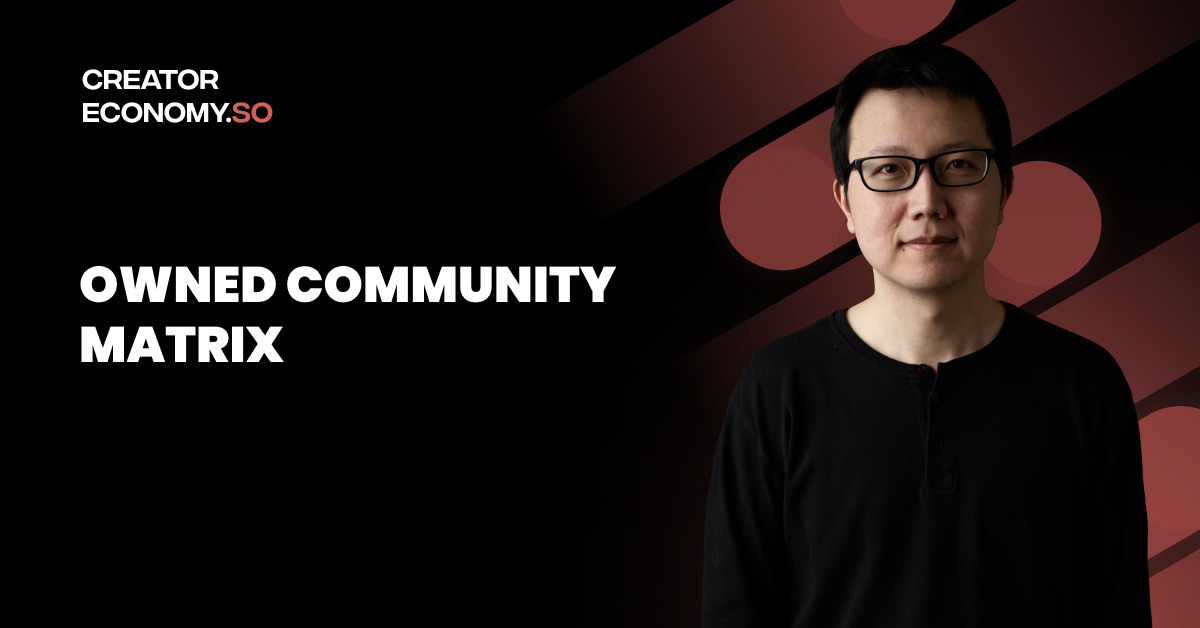Level up your product and creator skills in just 5 min a week. Join 50,000 readers:
Dear subscribers,
The go-to owned community platform for creators will play a major role in the creator economy. To understand why let's explore the owned community matrix:
Rent audience
Own audience
Rent community
Own community
1. Rent audience
Most creators rent their audience from a platform like YouTube, Instagram, Twitch, TikTok, and Twitter.
As a creator, renting your audience is risky. At any moment, the platform can change its algorithms in a way that hurts your earnings. Even worse, you can get demonetized (e.g., David Dobrik on YouTube), banned (e.g., DrDisrespect from Twitch), or shut down with the platform (e.g., India removing TikTok).
Despite these risks, creators still choose to build their audience on these platforms due to their scale (e.g., YouTube), virality (e.g., TikTok, Clubhouse), and monetization potential (e.g., OnlyFans). But creators are also starting to realize that they should move their audience from these platforms to a channel that they own.
2. Own audience
Owned audience platforms help creators reach fans directly on open channels like email and text messages.






